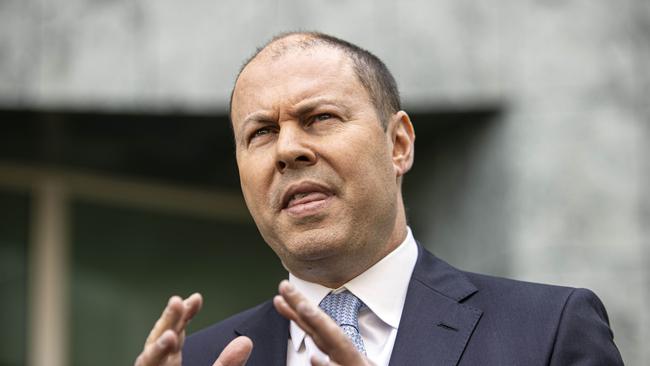US-style insolvency laws to save small businesses
Struggling small business owners will be able to restructure their debts and keep trading under sweeping reforms to Australia’s insolvency laws designed to spare them from going into administration. Here’s how it will work.

Victoria
Don't miss out on the headlines from Victoria. Followed categories will be added to My News.
Australia’s insolvency laws will be completely rewritten in an effort to prevent small businesses collapsing during the coronavirus recession.
The sweeping changes, to be announced by Josh Frydenberg on Thursday, will spare struggling small business owners from expensive voluntary administration processes from which many do not recover.
Instead, owners will be allowed to keep trading while restructuring their debts of up to $1m, mirroring America’s Chapter 11 bankruptcy model.
The Treasurer said the overhaul was a “critical part of our economic recovery plan”.

“These are the most significant reforms to Australia’s insolvency framework in 30 years, and will help to keep more businesses in business and Australians in jobs,” Mr Frydenberg said.
During the pandemic, the federal government has provided temporary relief under existing insolvency laws, which expires at the end of the year.
That is expected to spark a rush of companies being placed into administration but the government plans to have its new system in place by January.
The Productivity Commission has previously warned Australia’s insolvency laws mean “too much time and expense” goes into winding up businesses with limited assets to recover.
The costs of administration can discourage small business owners from engaging with the system to restructure their debts, and of those that do, 60 per cent collapse within three years.
Under the changes, which will apply 76 per cent of businesses, owners will instead be able to appoint an independent small business restructuring practitioner.
Together, they will have 20 business days to restructure debts, before those owed money have 15 business days to vote on the plan, including how much the practitioner is paid.

The plan is approved if supported by a majority of creditors. If not, the business can go into voluntary administration or access a streamlined liquidation process.
Assistant Treasurer Michael Sukkar said the existing “one-size-fits-all approach” did not work for small businesses.
Of those eligible for the new system, 98 per cent have less than 20 employees.
“We also believe that a small-business owner should get the opportunity to decide on how to reorganise their business or whether to wind down,” Mr Sukkar said.
“We want to ensure that when the pandemic has passed, Australian businesses can recover strongly and it will be critical that distressed businesses have the necessary flexibility to either restructure or to wind down their operations in an orderly manner.”
To prevent illegal phoenix activity, a business could only use the restructuring process every seven years, and the practitioner could shut it down if misconduct was identified.

